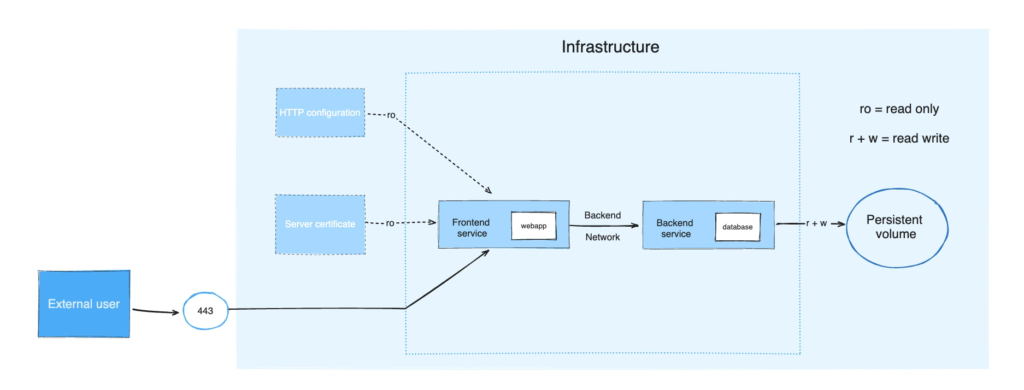set the label `com.docker.compose.project`.
Compose offers a way for you to set a custom project name and override this name, so that the same `compose.yaml` file can be deployed twice on the same infrastructure, without changes, by just passing a distinct name.
{{< /accordion >}}
## The Compose file
The default path for a Compose file is `compose.yaml` (preferred) or `compose.yml` that is placed in the working directory.
Compose also supports `docker-compose.yaml` and `docker-compose.yml` for backwards compatibility of earlier versions.
If both files exist, Compose prefers the canonical `compose.yaml`.
You can use [fragments](/reference/compose-file/fragments.md) and [extensions](/reference/compose-file/extension.md) to keep your Compose file efficient and easy to maintain.
Multiple Compose files can be [merged](/reference/compose-file/merge.md) together to define the application model. The combination of YAML files is implemented by appending or overriding YAML elements based on the Compose file order you set.
Simple attributes and maps get overridden by the highest order Compose file, lists get merged by appending. Relative
paths are resolved based on the first Compose file's parent folder, whenever complimentary files being
merged are hosted in other folders. As some Compose file elements can both be expressed as single strings or complex objects, merges apply to
the expanded form. For more information, see [Working with multiple Compose files](/manuals/compose/how-tos/multiple-compose-files/_index.md).
If you want to reuse other Compose files, or factor out parts of your application model into separate Compose files, you can also use [`include`](/reference/compose-file/include.md). This is useful if your Compose application is dependent on another application which is managed by a different team, or needs to be shared with others.
## CLI
The Docker CLI lets you interact with your Docker Compose applications through the `docker compose` command, and its subcommands. Using the CLI, you can manage the lifecycle of your multi-container applications defined in the `compose.yaml` file. The CLI commands enable you to start, stop, and configure your applications effortlessly.
### Key commands
To start all the services defined in your `compose.yaml` file:
```console
$ docker compose up
```
To stop and remove the running services:
```console
$ docker compose down
```
If you want to monitor the output of your running containers and debug issues, you can view the logs with:
```console
$ docker compose logs
```
To list all the services along with their current status:
```console
$ docker compose ps
```
For a full list of all the Compose CLI commands, see the [reference documentation](/reference/cli/docker/compose/_index.md).
## Illustrative example
The following example illustrates the Compose concepts outlined above. The example is non-normative.
Consider an application split into a frontend web application and a backend service.
The frontend is configured at runtime with an HTTP configuration file managed by infrastructure, providing an external domain name, and an HTTPS server certificate injected by the platform's secured secret store.
The backend stores data in a persistent volume.
Both services communicate with each other on an isolated back-tier network, while the frontend is also connected to a front-tier network and exposes port 443 for external usage.
